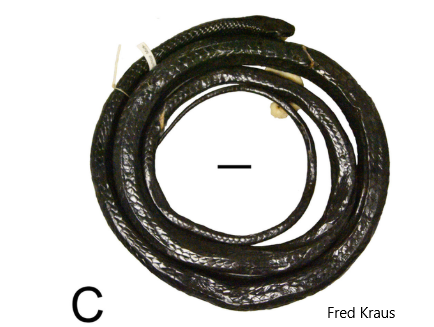
Australo-Papuan snakes of the genus Dendrelaphis have historically been a taxonomically confusing group, with 28 nomina applied to snakes in this region. Recent taxonomic revision has established the presence of nine valid species in this area, though few specimens were examined from across most of the large island of New Guinea. This lacuna, along with unreliable application of names to Melanesian Dendrelaphis in museum collections, means that the ranges of each species remain to be properly resolved on New Guinea and islands immediately to the east. Herein I examine the taxonomic status of Dendrelaphis specimens from outlying large islands in Milne Bay Province, off the southeastern tip of New Guinea, and I find that each of the three large islands of the Louisiade Archipelago, as well as Woodlark Island, contain their own endemic species. Based on hemipenial morphology, three of these species (D. anthracina sp. nov., D. melanarkys sp. nov., D. roseni sp. nov.) belong to the D. papuensis group and the last (D. atra sp. nov.) to the D. punctulatus group. Identification of the first three species requires reassessment and rediagnosis of D. papuensis. Two of the new species are characterized by ontogenetic melanization of animals, and a third is also uniformly black with a white chin when adult, though juveniles are unavailable to determine whether melanization also occurs ontogenetically in that species. Melanesian species of Dendrelaphis are largely diagnosed by unique color-pattern features, and this work identifies additional diagnostic features of color pattern for these species and confirms the critical importance of hemipenial differences in distinguishing among similar-appearing species in this region.









